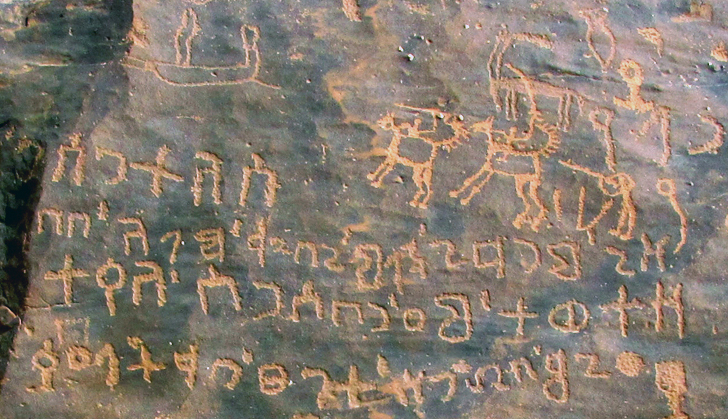
Taymanitic [formerly called 'Thamudic A'] is the name given to the ANA script used in the oasis of Taymāʾ (in north-west Saudi Arabia). This was an important stopping point on the caravan route from South Arabia to the Levant and Mesopotamia. The Taymanitic alphabet is probably mentioned as early as c. 800 BC when the regent of Carchemish (on what is now the Turkish-Syrian border) claimed to have learned it. About the same time an Assyrian official west of the Euphrates reported that he had ambushed a caravan of the people of Taymāʾ and Sabaʾ (an ancient South Arabian kingdom, Biblical ‘Sheba’) because it had tried to avoid paying tolls. There are two Taymanitic inscriptions dated to the mid-sixth century BC, since they mention the last king of Babylon, Nabonidus (556–539 BC), who spent ten years of his seventeen-year reign in Taymāʾ. One of these texts is illustrated here. At present, Taymanitic appears to have the same phonemic repertoire as Arabic except that it seems to lack letters for [ḏ] and [ẓ]. The majority of the texts are gravestones and graffiti and at present we have no — even indirect — evidence of the alphabet being used to write in ink. Taymanitic inscriptions and graffiti are found both within the oasis and in the surrounding desert.